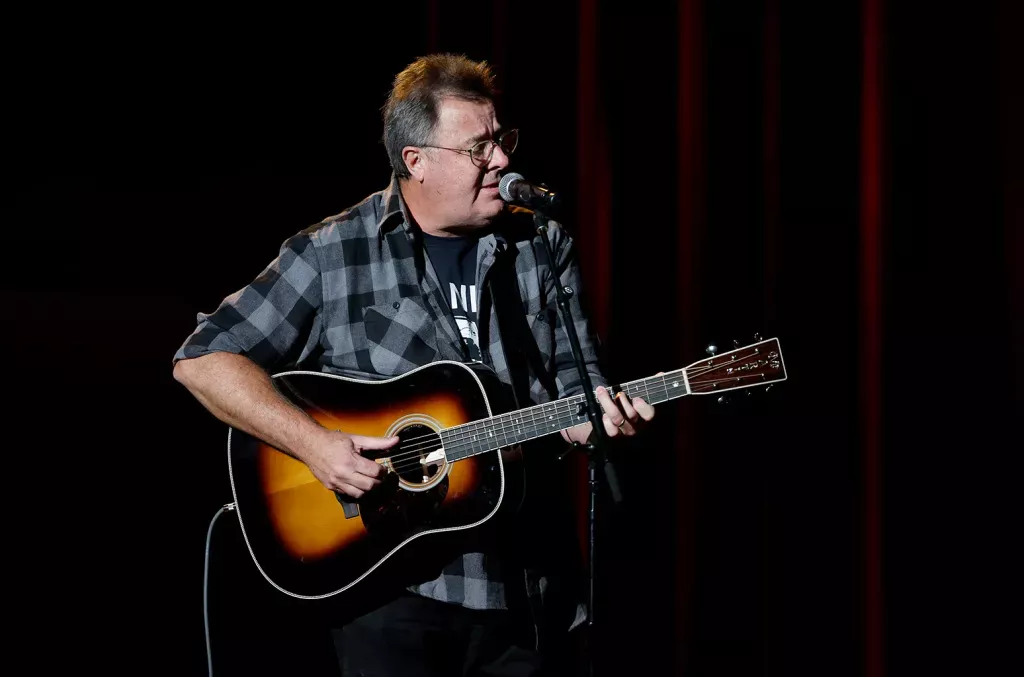In an electrifying event on August 29th, Eric Church took the stage as the latest participant in the Country Music Hall of Fame and Museum’s esteemed artist residency program. This marked the 18th installment of the program that has historically showcased legendary artists such as Cowboy Jack Clement, Earl Scruggs, and Kris Kristofferson. Church’s appearance, spanning two nights of intimate performances, unfolded at the prestigious Country Music Hall of Fame and Museum’s CMA Theater, boasting a seating capacity exceeding 700.
The significance of this moment was not lost on Church, nor on seasoned journalist Robert K. Oermann. As Oermann aptly observed, the present occasion held a special resonance as it brought Church’s journey full circle. Just seventeen years prior, Church ignited his major-label recording career by hosting an album release celebration for “Sinners Like Me” in the same venue, albeit the more modest 200-seat Ford Theater. In a charming twist of fate, Oermann, back then, queried the small assembly of fervent Church aficionados if they were prepared for a musical revelation. Now, standing before an audience replete with devoted fans, including many from his Church Choir community, the promise was not just a revelation but a soul-stirring journey.
Church’s triumphant return to the hallowed halls of the Country Music Hall of Fame occurred as he donned the title of a Country Music Association entertainer of the year awardee, a ten-time Grammy nominee, and the central subject of a dedicated exhibit titled “Eric Church: Country Heart, Restless Soul.” Positioned front and center on a stool, flanked by his steadfast band and harmonious backup vocalists, Church embarked on an awe-inspiring 19-song odyssey. This musical sojourn intricately wove the tapestry of his artistic evolution, unveiling the facets that propelled him into the echelons of country music royalty.
The evening’s outset delved into the crucible of Church’s resolute determination, a trait that steadfastly guided him through early career challenges. Projected on a vintage television-like screen, a cascade of past reviews lambasting his initial music and performances illuminated the room. From his inception, Church’s modus operandi deviated from the norm, embracing an artistic philosophy that celebrated exploration and creative deviation. An example of this was his expulsion from an early tour due to audacious volume levels and extended performances. Subverting expectations once more, he unveiled the “Mr. Misunderstood” album exclusively to his Church Choir fan club prior to any industry exposure. Through innovative gestures like challenging ticket scalping and ensuring affordable concert prices, Church cemented his identity as a champion of his fans.
Central to Church’s identity was the cultivation of a devoted fanbase. His repertoire during the CMA Theater set encapsulated this ethos. Tracks such as “How ‘Bout You,” “Sinners Like Me,” and “Smoke a Little Smoke” not only showcased his tenacity but also echoed his role as a torchbearer for the marginalized, the nonconformists, and those intent on etching a distinctive legacy.
The retrospective journey continued to illuminate Church’s breakthrough moments, spotlighting his prowess as a masterful songwriter. Selections from his critically acclaimed album “Chief” included heart-rending renditions of “Springsteen” and “Like Jesus Does.” The anthology expanded to encompass tracks from “The Outsiders,” encompassing emotionally charged performances of “Give Me Back My Hometown” and “Talladega.” His magnum opus, “Mr. Misunderstood,” offered the eponymous track and the introspective “Record Year.” Transitioning to the album “Desperate Man,” Church’s resonant baritone brought to life the wisdom-laden “Some of It” and the juxtapositional tenderness and fortitude of “Monsters.” Along his musical odyssey, Church earned an impressive tally of ten Billboard Country Airplay No. 1 hits, solidifying his standing as a prolific contributor to country music’s contemporary landscape.
Beyond his commercial achievements, Church’s impact lay in his role as a chief architect in reshaping the sonic tapestry of country music. Infusing soulful, heartland rock sensibilities, he artfully merged profound observations with irresistible melodic hooks, catalyzing a renaissance within the genre.
The performance journey was replete with crescendos of rock-infused energy and poignant tributes. As the crescendo of cheers proclaiming “Chief!” echoed through the theater at the set’s culmination, Church humbly addressed the fervent audience. Expressing his hope that the spectators relished the show as much as he relished delivering it, he took a reflective pause. Contemplating the cascade of career-spanning music that had transpired over the preceding hours, Church imparted his perspective on the endeavor. Acknowledging that the journey wasn’t devoid of challenges, he affirmed that these trials and triumphs are integral to his life’s narrative. With palpable gratitude, he articulated that every note performed that evening encapsulated the essence of his being, a testament to how he arrived in that very room. In a resounding proclamation, Church declared the experience to be the crowning honor of his life’s journey.
In conclusion, Eric Church’s residency show encapsulated more than an artist’s musical chronicle. It unveiled a maverick musician who embraced challenges, defied norms, and tirelessly championed his audience. It was a testament to the power of artistic integrity, the resonance of authentic storytelling, and the unwavering bond between an artist and their devotees. As the echoes of the performance lingered, it was unmistakably clear that Eric Church’s legacy was not merely etched in melodies but woven into the very fabric of country music’s evolving identity.

